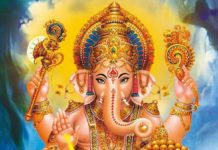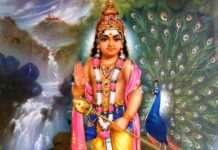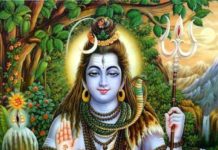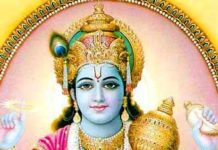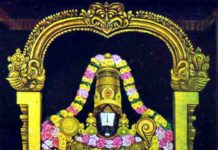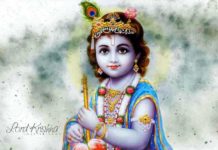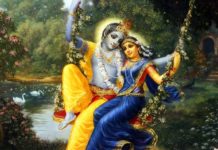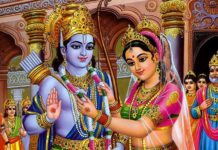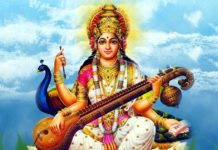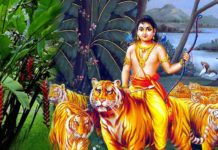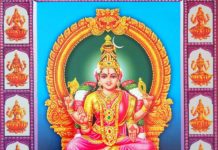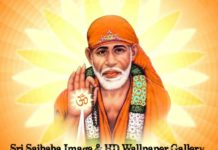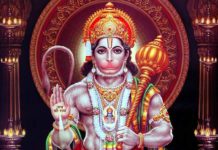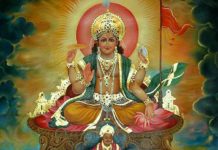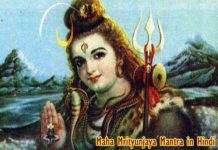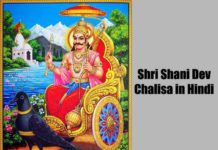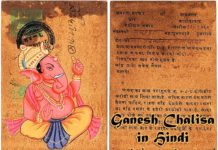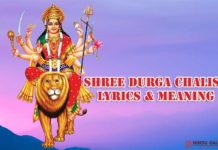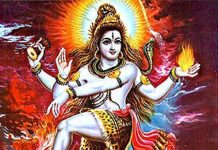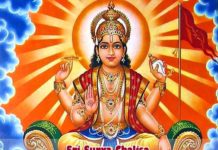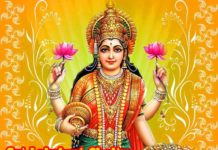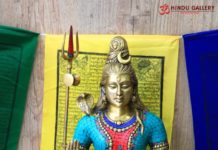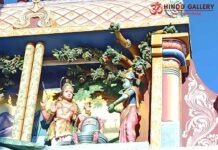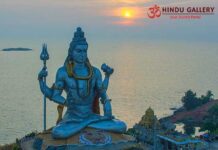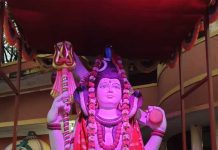Sri Shankara Jayanthi is the festival ascribed to the birth anniversary of Sri Adi Shankaracharya, the Sage who had advocated the concept of Adhvaitham in Hinduism. There is a belief that Sri Shankara was the incarnation of Bhagwan Shiva.
Sri Shankara Jayanthi occurs on the Shukla Paksha Panchami of Vaisaka month. The ensuing festival occurs on Sunday, 12th May 2024. The exact duration of the Panchami Tithi has to be ascertained from the respective regional calendars.
Sri Shankara Jayanthi on 12th May 2024 is believed to be the 1236th birth anniversary of Sri Adi Shankaracharya.
Sri Shankara Jayanthi – Legend
Sri Shankara had a pivotal role in reviving Hinduism which was immersed in ritualistic way of life. He had taken great efforts to change the gear of the religion from ritualism to spiritualism.
The synopsis of the life of Sri Shankara is given in this article.
Avathar
Sri Shankara was born in Kalady, Kerala in the year 788 A.D. His parents Shivaguru and Aryamba were the ardent devotees of Bhagwan Shiva. They were praying to Bhagwan Shiva for a Child for a long time. It is believed that Bhagwan Shiva had appeared in the dream of Aryamba and promised her that He Himself would be born as her Son. There is another belief that Bhagwan Shiva had appeared in the dream of Sivaguru and made the same promise.
Sivaguru had passed away when Sri Shankara was just a kid. Aryamba arranged for Sri Shankara to get early education.
She also did upanayanam to Him. Though she was a widow, against the traditions prevalent in those days, she presided over the function. The custom of Upanayanam boy eating his first meal (after wearing the holy thread) with his mother is believed to have started with Sri Shankara.
River Purna
Aryamba used to take bath in river Purna which was a bit far away from her house. One day, Sri Shankara had found her exhausted. Sri Shankara had prayed that the river should flow near their house. As a miracle, river Purna had changed its course and started flowing near their house.
Sanyasam
He wanted to assume Sanyasam at a very young age. However, His mother Aryamba could not accept it. One day, while taking bath in the river, He was caught by a crocodile. His cry for help was in vain.
Even His mother could not do anything to save her Son. Sri Shankara pleaded with her that if she let Him go to assume Sanyasam, he would atleast die peacefully.
Aryamba accepted with half heart. Sri Shankara had uttered Sanyana manthras and soon the crocodile had relieved Him.
His mother let go of Him on the promise that only He would perform her last rites even if He was a sanyasi. He had accepted the condition.
Kanaka Dhara
As per Sanyasa Dharmam, the Sanyasi should eat only the food earned through alms. So Sri Shankara used to chant “Bhavadhi Biksham Dhehi” before the houses till he got the food for the day.
One day, he went to the house of a poor brahmin lady. She had nothing to offer Him except a small gooseberry. She gave it to the Boy happily. Sri Shankara immediately composed Sri Kanaka Dhara Stotram invoking Sri Mahalakshmi.
Sri Mahalakshmi was pleased with His prayers and immediately showered gold coins in front of the poor lady’s house.
Guru
He had travelled by foot searching for a suitable Guru. When He was in the region of Narmada river, He saw a hermitage. He found the Sage in a cave. He went round the cave thrice before entering it.
The Sage asked Him who he was. Sri Shankara had instantly composed and recited Nirvana Shatakam as the answer to the question.
The Sage was Sri Govindha Bhagavadh Padha. He was much impressed by the boy’s eloquence and clarity of thought. So, he accepted Him as his disciple.
Sri Shankara had learnt the Vedas and Scriptures deeply from His Guru. He had also learnt the concept of Adhvaitham.
Life Journey
After completing Gurukul, Sri Shankara had travelled the length and breadth of Bharath. He had continuously held discussions with scholars and kept updating His knowledge. At times the discussions turned into debates. Eventually, Sri Shankara was accepted as Guru by many.
He had kept advocating Adhvaitham and Dashanami Sampradayam wherever he went.
Adhvaitham
The life of the human is called Jeevathma. God is Paramathma. As per Adhvaitham principle both Jeevathma and Paramathma are one and the same. It is for the humans to realize that God exists within the self. This realization is called self-realization or self-actualization. This is the concept of unification of the soul with supreme soul.
Sri Shankara had authored innumerable texts on the concept of Adhvaitham.
Kasi Nivasam
Sri Shankara had visited Kasi Kshethram as directed by His Guru. He went there to prepare the explanation for Brahma Sutra. He had held discussions with various scholars on the Vedic subjects.
One day, He was going to river Ganga along with His followers. On the way, He saw a Chandala (cremation worker) with four dogs. As the Chandala was coming opposite Him, He asked the Chandala to move away.
The Chandala then asked Him, “You keep saying to everybody that Jeevathma and Paramathma are one and the same. If human soul and supreme soul can be one, how come that there are inferior and superior beings amongst humans? When you ask me to move away, or you referring to my body or my soul?”.
Sri Shankara had realized that the Chandala was none other than Bhagwan Shiva and the four dogs are the four Vedas. He immediately prostrated before the Chandala. Bhagwan Shiva gave darshan to Him and blessed Him.
Bhadri Temple
Sri Shankara had visited Bhadrinath. At the temple, He saw that only a Salagramam stone was worshipped and that there was no Vishnu idol. When He asked the priests, they told Him that the idol was buried in the river for protecting it from the intruders and that they could not locate the Vigraha later.
He immediately plunged into the river and located the statue. He brought it to the shore and took to the temple. With all the prescribed rituals, He had installed the Murthy again there.
Synthesizing of six sects
Hinduism was in six sects each representing a God. They were Ganapathyam (worshipping Ganapathi), Koumaram (worshipping Subramanya), Saktham (worshipping Shakthi), Saivam (Worshipping Shiva), Vaishnavam (Worshipping Vishnu) and Sowram (worshipping Sun).
Sri Shankara had unified all of them together explaining that the six Gods are the manifestations of a single Almighty only.
Mother’s rites
When he did receive the premonition about His mother’s end, He rushed to His mother. She was relieved to see Him before she passed away. Despite opposition from the relatives, He did perform the last rites of His mother on His own.
Scriptures
Sri Shankara had written interpretations for Srimad Bhagavad Gita, Brahma Sutra and Upanishads. Athma Bodha, Viveka Chudamani, Vakya Vrudhi and Upadesa Sahasri are some of the literary works written by Him.
His Brahma Sutra Bhashyam is the first explanation for the Brahma Sutra ever written.
Compositions
Sri Shankara had composed Slokams invariably on all Hindu Gods. Starting from Ganesha Pancharathnam on Sri Vinayaka, He had composed several hymns on Bhagwan Shiva which are condensed and known as Shiva Sthuthi.
He had composed hymns of Sri Subramanya, Sri Narasimha, Sri Mahalakshmi and other Gods. Wherever he visited, he had composed hymns on the Deity in the temple in that area.
Shakthi Chakra
He had visited the Shakthi Peet Temples pertaining to Sri Parvathi Devi and had installed Sri Chakra in most of the temples. He had done the installations to reduce the anger and intensity of Sri Shakthi Devi. Kanchi Kamakshi Amman, Kollur Mookambika, Thiruvottriyur Vattaparai amman etc., are a few of them.
Disciples
Sri Shankara had several disciples wherever he went. However, four of them are prominent.
Sri Padhma Padha
His original name was Sanandana. As per the legend, he was washing and drying the clothes of Sri Shankara at Ganges.
Sri Shankara had crossed the river and had asked for the clothes. Sanandana had taken the dried clothes of Sri Shankara and simply walked on the water to reach the other bank.
To the surprise of everyone, for every step he had taken, a lotus had emerged from the water to support the foot of Sanandana to prevent him from drowning.
Sri Shankara was amazed at the turn of events and re-named Sanandana as Padhma Padha as lotus had emerged under his feet.
Sri Thotakacharya
His original name was Giri. He was a slow learner. However, he was very much devoted to Sri Shankara. One day, he was held up in some routine chores and hence could not attend the class. Sri Shankara was waiting for him.
Sri Padhma Padha had told Sri Shankara to get on the with the class as Giri could anyway not understand.
Sri Shankara then thought that He should reward Giri for all his hard work. He had virtually transferred some knowledge to Giri. With the effect of transfer, to everyone’s surprise, Giri had composed and recited Thotakashtakam.
Sri Shankara had re-named him as Thotakacharya.
Sri Hastha Malaka
Sri Shankara was once at a village near Kollur, Karnataka. He met a Brahmin called Prabhakar on the way. Prabhakar had a son. He told Sri Shankara that his son was good for nothing and that he was insane.
Sri Shankara had asked to talk to the son. As the boy came to Him, Sri Shankara had posed a few questions on Vedas to the boy. The boy fluently answered. Sri Shankara had also found out that the boy was well versed in Adhvaitham.
He had accepted the boy as His disciple and re-named him as Hastha Malaka.
Sri Sureshvara
His original name was Mandana Mishra. He was a great scholar. Even the parrots at his house used to chant Vedic verses.
Once Sri Shankara entered into debate with Mishra on Karma Mimamsa. Mishra’s wife Bharathi was the mediator.
She had given a garland of flowers each to both Sri Shankara and Mishra. She had ruled that whoever kept the flowers fresh at the end of the debate would be proclaimed a winner. It was also understood that if Mishra had lost, he should become the disciple of Sri Shankara.
The debate went on in full swing. At the end, Mishra thought that he had overruled Sri Shankara. But his flowers had dried up and withered. Mishra’s wife declared only Sri Shankara as winner as His flowers remained fresh.
However, impressed by Mishra’s knowledge, Sri Shankara had accepted him as His disciple. He re-named him as Sureshvara.
There is a belief that Sri Shankara had worshipped Bharathi as Sri Sharada Devi.
Shankara Mutts
Sri Shankara had established four Mutts in India.
Sringeri Saradha Peetam
This is known as Dakshinamnaya Sri Saradha Peetam.
This was the first mutt founded by Sri Shankara. This is situated in Karnataka on the banks of Thunga river.
This Mutt functions on the basis of Yajur Veda. The main principle is ‘’Aham Brahmasmi” which means “I am the Brahmam”. The Mutt was first under the charge of Sri Hasthamalakacharya.
Dwaraka Peetam
This is known as Paschimamnaya Sri Saradha Peetam. This is situated at Dwaraka, Gujarat.
This Mutt functions on the basis of Sama Veda. The main principle is “Thathvamasi” which means “That thou art”. The Mutt was first under the charge of Sri Sureshvara.
Jyotirmatha Peetam
This is known as Uttaranmaya Sri Jyotish Peetam. This is situated at Badri, Uttrakhand.
This Mutt functions on the basis of Atharvana Veda. The main principle is “Ayamathma Brahma” which means “This athman is Brahman”. The Mutt was first under the charge of Sri Thotakacharya.
Govardhana Peetam
This is known as Purvamnaya Sri Govardhan Peetam. This is situated at Puri, Orissa.
This Mutt functions on the basis of Rig Veda. The main principle is “Pragnanam Brahma” which means “consciousness is Brahma”. The Mutt was first under the charge of Sri Padhma Padha.
Moksha
Sri Shankar is believed to have attained moksha in 820 A.D at the age of 32 at Kedharnath. As per legend, He had entered into a cave and never returned.
Sri Shankara Jayanthi – celebrations
Sri Shankara Jayanthi is observed at all Shankara Mutts across India. The Slokams composed by Sri Shankara are recited. Special pujas are done. Discourses on the life and greatness of Sri Shankaracharya are conducted.






